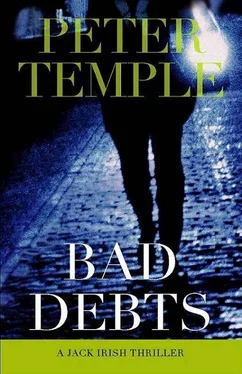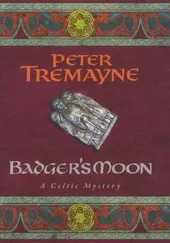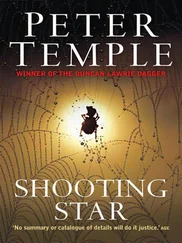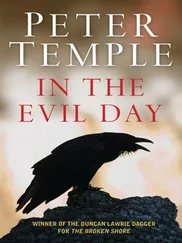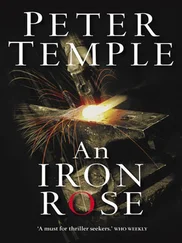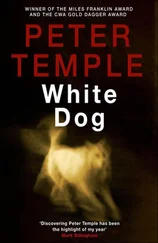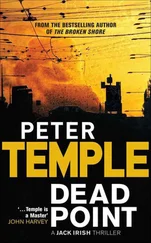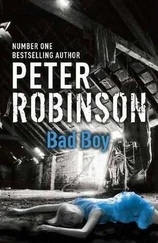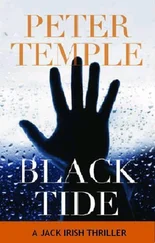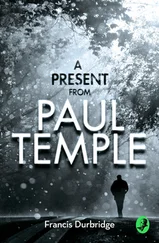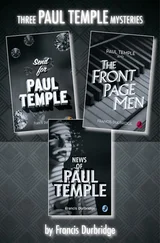‘Not just yet. Is there anyone Anne might have confided in? I mean, if she had any fears for her safety, been threatened, anything like that?’
‘I suppose the people in that group of hers. Right to a Roof? We never knew any of them.’ She thought for a while. ‘About her safety, I can remember her saying, it must have been at our wedding anniversary party, I can remember her saying she could go anywhere in safety because the Special Branch were always lurking somewhere.’
‘At the squats she organised?’
‘I think she meant generally. She was on about mining companies cheating Aboriginals, but I’m afraid I wasn’t paying much attention. She usually had something she felt strongly about. Her father used to say she was only scored for percussion.’
There didn’t seem to be anything left to ask. I thanked her for seeing me. The passage leading to the front door was wide enough for us to walk side by side. One side was hung with Australian paintings from the thirties and forties: outdoor scenes, sunlit interiors. I recognised a Gruner and a Tidmarsh. The other wall was covered with framed family photographs.
At the front door, I looked to my right and saw a photograph of four solemn-faced girls in school uniform, two blonde, two dark-haired. They looked about sixteen. Under the picture, it said, ‘Coniston Ladies’ College Debating Team, 1976’.
I looked at the names. Anne Jeppeson was on the top right, blonde, with a snub nose and rebelliously tousled hair. The girl next to her was one of the brunettes.
Her name was Sarah Pixley.
‘She loved debating at school,’ said Mrs Jeppeson. ‘My husband never went to hear her.’
I pointed at Sarah Pixley. ‘Was she friendly with Anne Jeppeson?’
Mrs Jeppeson touched the photograph. ‘Sarah Pixley. They were great friends at school. Two of a kind in many ways. Her father’s the politician. Sarah hated him. She took her mother’s name when she left school. Life can be cruel to parents, can’t it?’
‘It can, Mrs Jeppeson,’ I said. ‘It can.’
I drove away down streets where the naked branches of elms and oaks were woven overhead like basketwork and you could glimpse the pert backsides of BMWs and Saabs in brick-paved driveways. It took a while before I found a place that looked as if it might make a hamburger. I was starving.
The hamburger was of the old school: pressed flat as a powder compact, burnt mince topped with burnt onion and cold-storage tomato. It was made by a new-school Aussie, a Vietnamese with rings in one earlobe and a beanie in the Richmond colours. It wasn’t a bad hamburger. A slice of sun came out and fell on my lap as I sat in the car, eating and watching a deal taking place across the street in a small park. Two boys in Melbourne Grammar blazers were scoring something off a tall youth with a ponytail wearing an oversized leather jacket. Answers to that day’s maths homework, probably.
When I’d finished, I had a sudden urge to see what was happening to the Hoagland estate. I set off down Malvern Road in the direction of St Kilda Road. At Albert Park, I got on to Kings Way and went up King Street through the drab end of the business district. As I waited to turn into Dudley Street at the Flagstaff Gardens lights, a dero in a mauve polyester suit with a filthy Fitzroy FC scarf wound around his neck knocked on the passenger window. I leaned across and wound it down.
‘Help a bloke can’t get a job?’ he asked. He had a long, narrow face, with deepset eyes and a big nose. He looked like a country boy lost in the city for forty years.
I found a five-dollar note and gave it to him. ‘Go the Roys.’
‘You’re a prince among men,’ the man said. ‘Go Roys, make a noise.’
The future Yarra Cove was much larger than it had appeared on Gerry Schuster’s computer screen. I parked near a wooden observation platform next to one of the three site gates. A burly man in a dark-blue uniform with a red shoulder patch that said AdvanceGuard was talking to the driver of a ute in the gateway.
There must have been twenty earthmoving vehicles, giant yellow insects, attacking the glum expanse of grey mud. At least as many trucks moved around the area on temporary roads, stretches of coarse aggregate sinking into the clay.
Not a trace remained of anything that had been there before. I stood at the rail, ten metres up, and after a while the ripping and pushing of the machines began to make some sense. They were gouging massive trenches, the width of streets, running from the waterfront. All of them led to an oval-shaped area, bigger than a football field, marked out with yellow nylon cord threaded through the eyes of metre-high steel needles stuck in the ground. The site huts, a small village of them, were in the middle of the oval. Eventually, the oval would be a yacht basin, with the trenches becoming canals leading from the riverfront. The Hoagland flats must have stood where a small digger was unearthing pipes in one ploughed-up patch.
For a while, caught up in the sheer scale of the operation, I watched the machines roaring and grinding, scooping and reversing, dumping, wheeling, their grey breaths pumping out and being snatched by the sharp-toothed little wind off the river. The whole scene was one of power: man and machine changing a landscape by sheer force.
This was what it was all about.
Sheer force.
Anne Jeppeson thought she was taking on the power of Heartless Bureaucracy. What hit her was the sheer force of Money.
She died so that someone could make a fortune out of rich people’s desire to park their boats outside their front doors.
It came to me with absolute certainty that my little inquiry into the lives and deaths of Danny McKillop and Anne Jeppeson was of no consequence whatsoever. Nothing would change what had happened, no-one would be called to account for it. Anne, Danny, Ronnie Bishop, the doctor, me-we were all just minor nuisances.
I felt like shouting Fuck into the wind but there was someone else on the platform, a thin man with a week’s grey stubble and wispy hair sticking out from under a beanie. He was drinking a can of Vic Bitter. Looking at me, he drained the can and threw it over his shoulder. ‘Used to live here,’ he shouted over the noise. ‘Fucking shithole. Should’ve flattened it years ago.’ He took another can out of his anorak and popped it.
The daylight was almost gone when I parked outside my office. I had the key in the lock when I sensed someone behind me.
‘Mr Irish.’ It was a friendly voice. I turned. Two men, solid-looking, in dark suits. The one who had spoken held up an open badge wallet. ‘Detective-Sergeant James,’ he said. ‘The Commissioner of Police would like a word, if it’s convenient.’
‘It’s not,’ I said. ‘Tell him to make an appointment.’
‘If it’s not convenient, I have instructions to arrest you,’ he said, voice still friendly.
‘On what charge?’
‘Several charges. One is conspiring to pervert the course of justice.’
‘In what matter?’
‘Murders. Two of them.’
A gap appeared in my social calendar. I rode in the back of their grey Ford. No-one said anything. When it was clear that we weren’t going to police headquarters, I asked where we were going.
‘Collins Street,’ said the spokesman.
At the Hyatt on Collins, the driver showed the attendant a card and we drove into the underground carpark. We parked in a reserved bay next to the lift.
‘Let’s go,’ said the spokesman.
The three of us went up to the twelfth floor. When the lift door opened, Detective-Sergeant James’s partner went out first.
‘After you,’ said James. ‘Number seven.’
I followed his partner down the hushed pink and grey corridor. As he passed a door, he indicated it with his thumb and kept walking. I knocked at number seven. The partner had turned around about ten metres down the corridor and was looking at me. James, near the lifts, was studying a print on the wall.
Читать дальше
